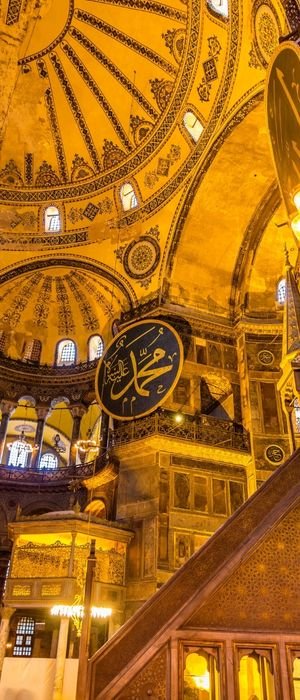Hagia Sophia, also known as Saint Sophia Museum, is a historical landmark located in Istanbul, Turkey. Originally constructed as a basilica during the reign of Byzantine Emperor Justinian I between the years 532 and 537, it occupied a central position in the old city center of Istanbul. Later, in 1453, after the conquest of Istanbul by the Ottoman Empire, it was converted into a mosque by Fatih Sultan Mehmet.
Since 1935, Hagia Sophia has served as a museum. Its architectural significance lies in its unique combination of the basilica plan and the central plan, making it a pivotal moment in the history of architecture. The most striking feature of Hagia Sophia is its massive dome, which has become an iconic symbol of Byzantine architecture.
The name “Hagia Sophia” is derived from the Greek words: “hagia” meaning “holy” or “saint,” and “sophia” meaning “wisdom.” Thus, the full name translates to “sacred wisdom” or “divine wisdom.” In the Orthodox sect, it is considered one of the three attributes of God.
Historical Background:
Hagia Sophia stands as a testament to 15 centuries of history, art, and architectural mastery, making it one of the world’s most remarkable landmarks.
